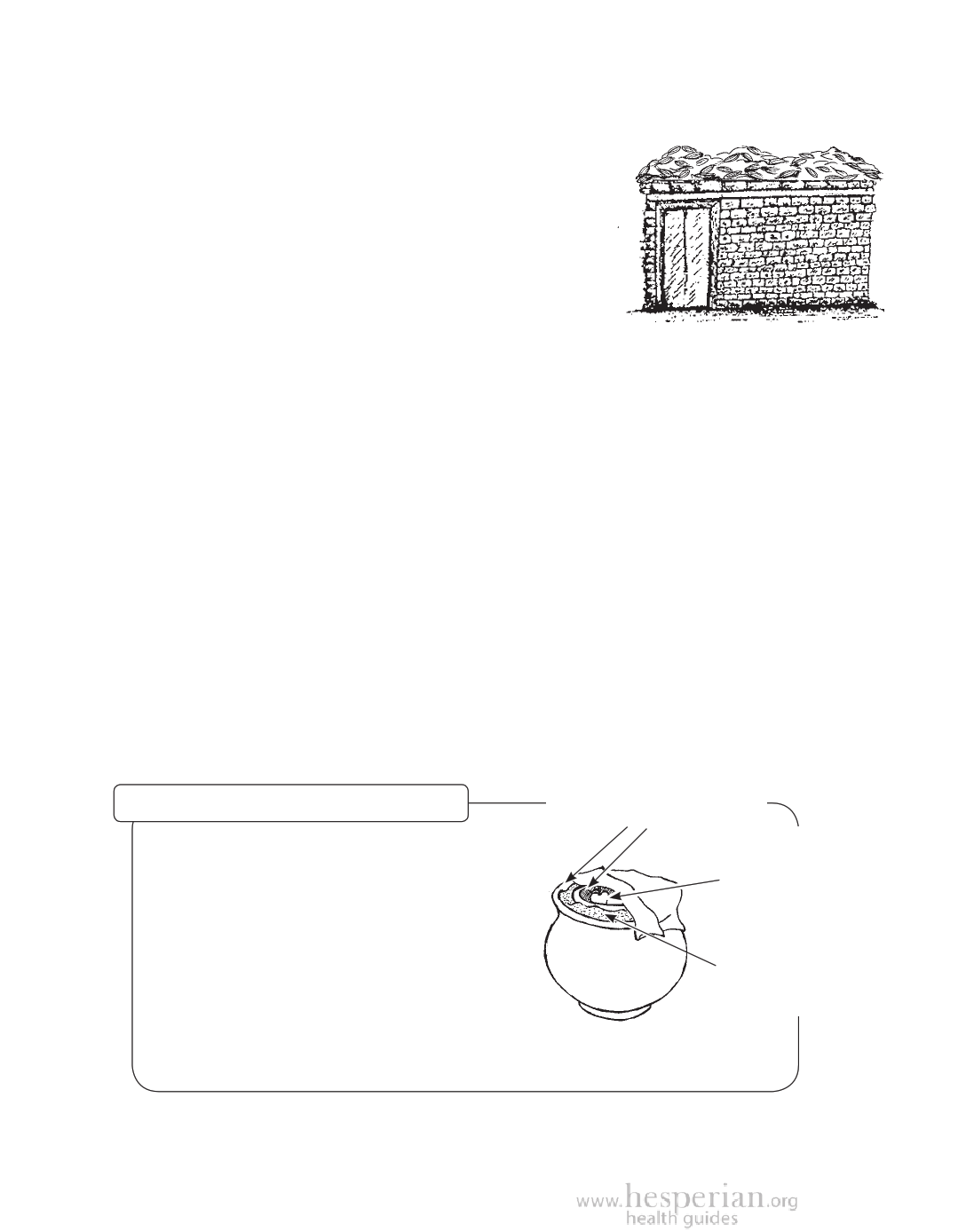
306 Sustainable Farming
Storing fruits, vegetables, meat, and milk
Fruits, vegetables, meat, and milk are full of moisture.
Moisture is needed by the bacteria and fungus that
cause rot. Keeping foods cold or frozen will slow down
the rotting process. When there is no way to store foods
cold, they can still be preserved by:
• drying. Foods can be dried in the sun, in an oven
on very low heat, or by putting them in salt. If kept
away from pests and moisture, dried foods can be
stored for a very long time.
Sun, and heat from cooking,
will dry maize placed on a roof.
• smoking. Foods put over a smoky fire will be preserved both by the drying
that happens and by the smoke. Meats are commonly preserved by
smoking.
• fermenting. Fermenting, like rotting, is the process of letting bacteria and
fungus change food. But unlike rotting, fermenting allows only certain
kinds of bacteria and fungus to grow. Cheese and some kinds of sour
breads are fermented foods. Fermented foods can be more nutritious and
easier to digest than the food they are made from.
• pickling and jarring. Fruits, vegetables, and meats are soaked in vinegar
and kept in covered or sealed containers. The sourness of the vinegar
keeps bacteria and fungus from growing. Fruits can be cooked in sugar
syrup and sealed in boiled jars to preserve them.
Storing root crops
Root crops can last a long time if they are stored in places that are dark,
fairly dry, cold, and safe from pests. Layering root crops in straw or sawdust
so they do not touch each other keeps them fresh.
How to make a natural refrigerator
A Nigerian teacher named Mohammed Bah Abba
developed a method called the “Pot-in-Pot” to
store food where there is no electricity.
Leave the Pot-in-Pot in a dry, open place. As dry air
surrounds it, water in the sand passes through the
outer surface of the larger pot, making it stay cool.
When the water passes from the sand, the inner
container is cooled, destroying harmful germs and
preserving the food inside. The only maintenance
is washing and replacing the sand every so often.
Two clay pots of different sizes,
one placed inside the other.
Food or drink is
placed inside the
smaller pot and
covered with a
damp cloth.
The space between
the pots is filled
with wet sand that
is kept always moist.
This natural refrigerator works
best in a dry, hot climate.
A Community Guide to Environmental Health 2012